

Anthony Crawford
1990 Lamborghini Countach review
6 Days Ago
Subaru's trusty Impreza AWD hatchback has been renewed for a sixth season. It isn't the new class leader, but it's another solid effort.
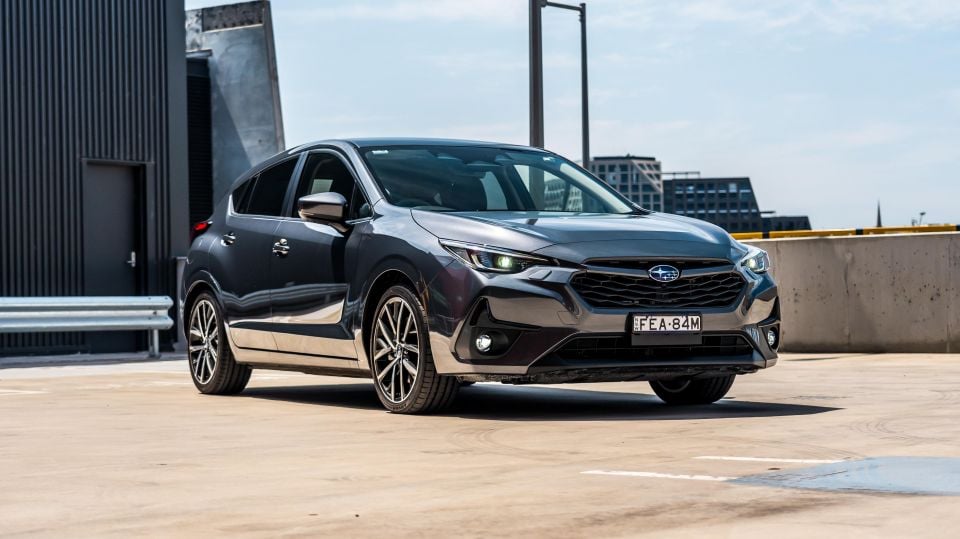
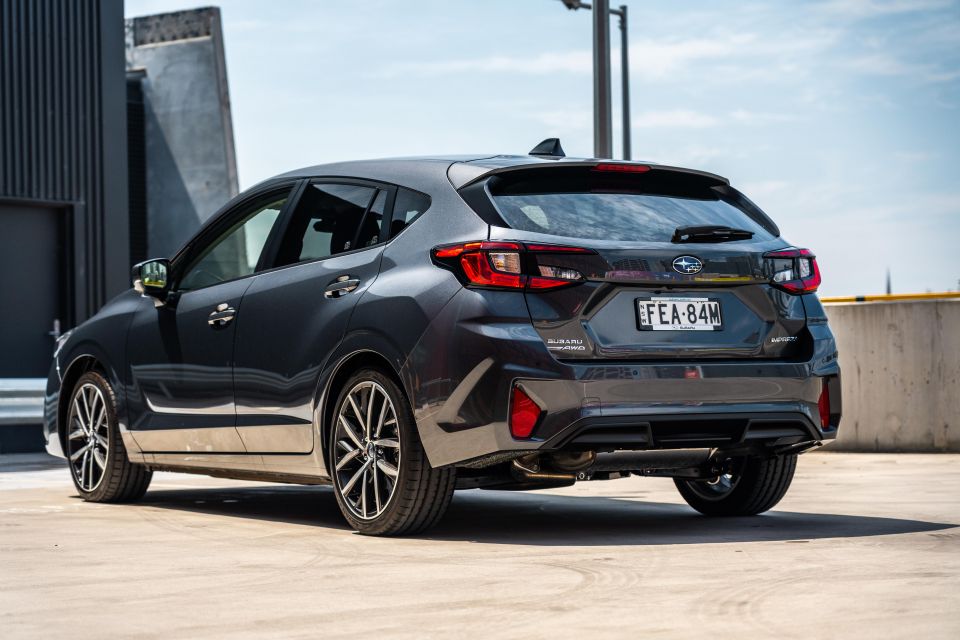

Quickly see how this car stacks up against its competition. Select any benchmark to see more details.
Where expert car reviews meet expert car buying – CarExpert gives you trusted advice, personalised service and real savings on your next new car.
Small hatchbacks aren’t as common as they once were in Australia – let alone all-wheel drive ones.

But that hasn’t stopped the 2024 Subaru Impreza, which arrives in Australia now in its sixth generation with a three-strong model range exclusively offered with the brand’s symmetrical all-wheel drive system.
Passenger cars have been in steady decline for some time in Australia, with the once top-selling small car segment now in the shadow of similarly sized SUVs and crossovers.
Still, Subaru says there’s a loyal customer base Down Under and the Impreza also offers that unique selling point (USP) of an AWD option in an almost exclusively front-wheel drive (FWD) segment.
The Impreza nameplate is celebrating 30 years in Australia in 2024, and even last year the previous-generation model managed over 2000 registrations despite being in runout. The year prior it returned 3000 sales – not insignificant.

For this latest iteration, there’s no more sedan body style and there’s no longer a manual option anywhere in the world. Australia currently missed out on the e-Boxer mild-hybrid option, though it could come later on.
So how does this Japanese AWD hatchback fare as the light on this segment fades in Australia?
The new-generation Impreza range opens from $31,490 plus on-road costs, with the mid-spec 2.0R on test bringing that to $34,990 before on-roads.

2024 Subaru Impreza pricing:
Prices exclude on-road costs
To see how the Subaru Impreza compares with its rivals, check out our comparison tool.
You’d be hard pressed to find any differences between this and the related Crosstrek – they are the same car, after all.
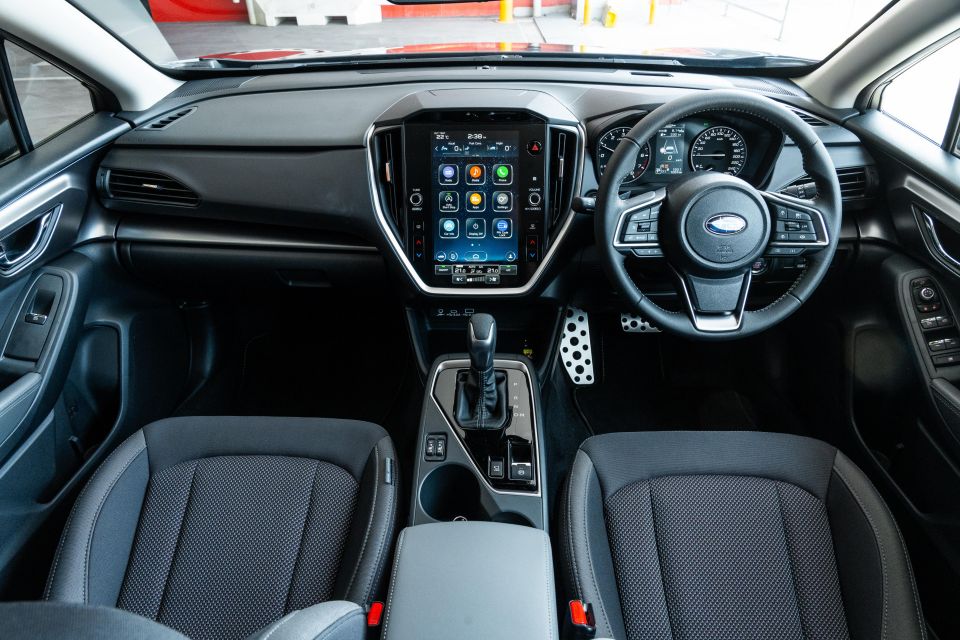
You can hop into the Impreza after sitting in any of Subaru’s latest products and immediately feel comfortable, such are the similarities across the range.
The upright 11.6-inch touchscreen infotainment system is the centrepiece, and comes standard across the range with wireless Apple CarPlay and Android Auto. If you want satellite navigation though, you need to step up to the 2.0S.
The interface is clean and easy to use, while the funky fonts and blue colour theme offer some visual pop. Response to inputs and processing speeds are good, and it’s hooked up to decent audio systems regardless of which variant to you choose.
The standard six-speaker system in the 2.0L and 2.0R is already pretty good, with clear sound and little distortion or vibrations when you dial it up. It also has pretty thumpy base which is impressive.




While the climate control menu is relegated to the touchscreen, there are physical temperature controls and the HVAC widget is permanently located at the base of the display – definitely one of the better implementations.
Comfort is pretty good for the driver and passenger. The 2.0R’s ‘premium cloth trim’ with electric driver’s seat adjustment and heating is somewhat unusual for a fabric-trimmed seat – but it’s good for the class.
The steering wheel is trimmed in a hardy, grained leather that while not soft and supple like other vehicles in the segment, is grippy and well-suited to the Subaru’s more adventurous pitch. The multifunction switchgear is chunky and well laid out, too.
Ahead of the driver you won’t find a flash all-digital cluster, but the classic gauges flanking a colour supervision display look just fine, and will no doubt be favoured by the more traditional crowd. I also like the sports pedals in R and S grades, which are a nice touch.

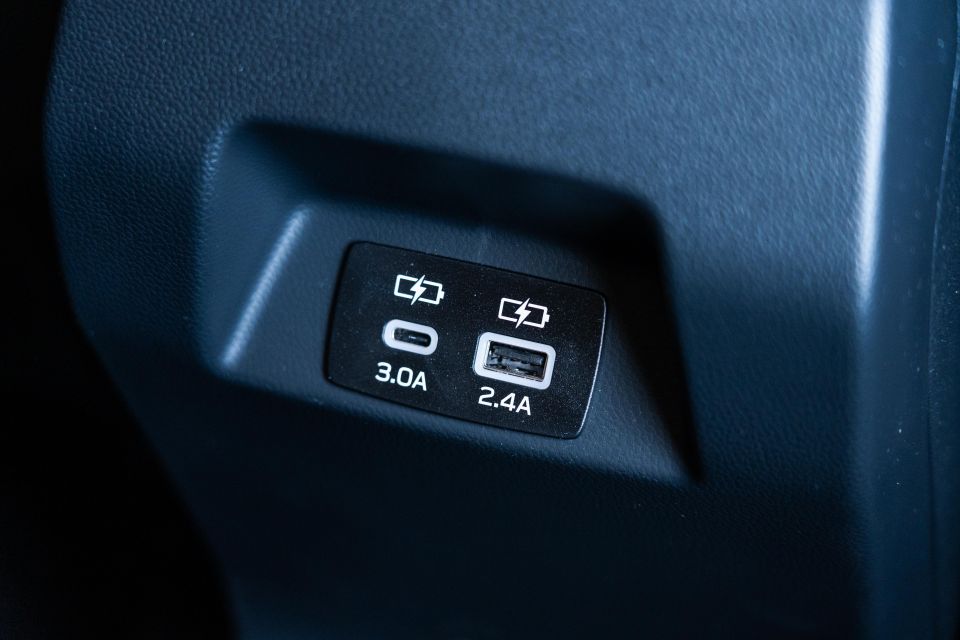
The second row of seating has never been an Impreza strength, partly due to the drivetrain packaging that no doubt eats into the rear passenger and cargo areas of the cabin.
Leg and knee room are adequate but won’t challenge class leaders, and the Impreza continues to lack rear air vents. There are, however, USB-A and USB-C charging points in the 2.0R and 2.0S to keep devices juiced.
Headroom is fine, but the skinny body and large driveline hump in the floor impede on rear-centre passenger space.
This will seat four fine, and can handle child seats thanks to top-tether points across all three seats and ISOFIX anchors on the outboard positions. It’s far from worst in class in this respect.


Less impressive again is the boot area, which remains one of the smallest in class. Subaru quotes a measly 291 litres with the rear seats up, and 883L with them folded.
That’s closer to the Mazda 3 (295L) than a VW Golf (374L). Under the boot floor is a space saver spare wheel.
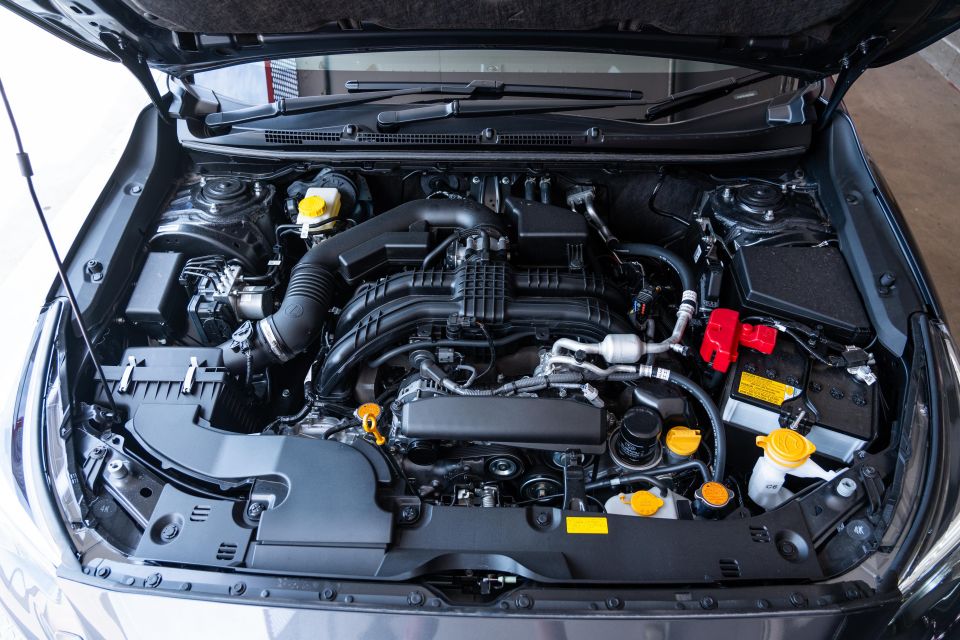
| Model | Subaru Impreza AWD 2.0 |
|---|---|
| Engine | 2.0-litre 4cyl boxer |
| Power | 115kW (6000rpm) |
| Torque | 196Nm (4000rpm) |
| Transmission | CVT auto |
| Driven wheels | All-wheel drive |
| Weight | 1416-1458kg (tare) |
| Fuel economy (claim) | 7.5L/100km |
| Fuel economy (as tested) | 8.3L/100km |
| Fuel tank size | 50L |
| Fuel requirement | 91 RON |
The new Impreza doesn’t revolutionise the on-road experience, but there are improvements over the old one.

You still get that rumbly start-up, with a signature sound that’s so distinctively Subaru. My Dad has owned a Liberty and Tribeca in the past and it’s something that hasn’t changed even after all these years.
Much like the related Crosstrek, the atmo 2.0-litre boxer engine is carried over, but the ‘Lineartronic’ continuously variable transmission (CVT) has been recalibrated to offer eight simulated gears up from the old seven. It’ll ‘step’ between ratios under mid- to hard acceleration, but don’t bother with the paddles – this isn’t that type of car.
The CVT does a good job at making the most of the engine’s relatively uninspiring 115kW/196Nm outputs, especially given peak torque comes in at 4000rpm and peak power is at 6000rpm. Even better, the variable nature of the CVT means it drops revs on the freeway too so it’s not spinning away at 100 clicks.
Performance is responsive and rev-happy, but it can get a little rumbly and coarse under load, and it’s hardly what you’d call ‘quick’. It has that old-school naturally aspirated vibe, but it’s not as effortless or efficient as turbocharged rivals.

It’s a shame Australia doesn’t get the option of the larger 136kW/240Nm 2.5-litre petrol engine offered by the Impreza in the United States. Then again, the 130kW/300Nm 1.8-litre turbo offered in the Japan-spec Forester and Levorg would be an even better bet in my opinion.
Bigger advancements have been made to handling and overall noise suppression, however. Like the Crosstrek, the Impreza has picked up a more rigid chassis, better sound deadening, as well as a new electric power steering system straight out of the sporty WRX.
That all makes for a more engaging and communicative drive, and the lowered body of the Impreza (130mm clearance versus 220mm for the Crosstrek) translates that more sporting feel a little better than its crossover sibling. The added refinement also means it’s not as noisy on the highway – the old model was particularly bad over coarse-chip roads.
The revised steering rack is well weighted, offering good accuracy and feedback. It gives a nice chuckable feel to the Impreza, and combined with that full-time all-wheel drive system there’s more grip than you’ll ever need. Flick the ‘S’ button on the steering wheel and it all tightens up for more sporty response – but this is an economy car, after all.
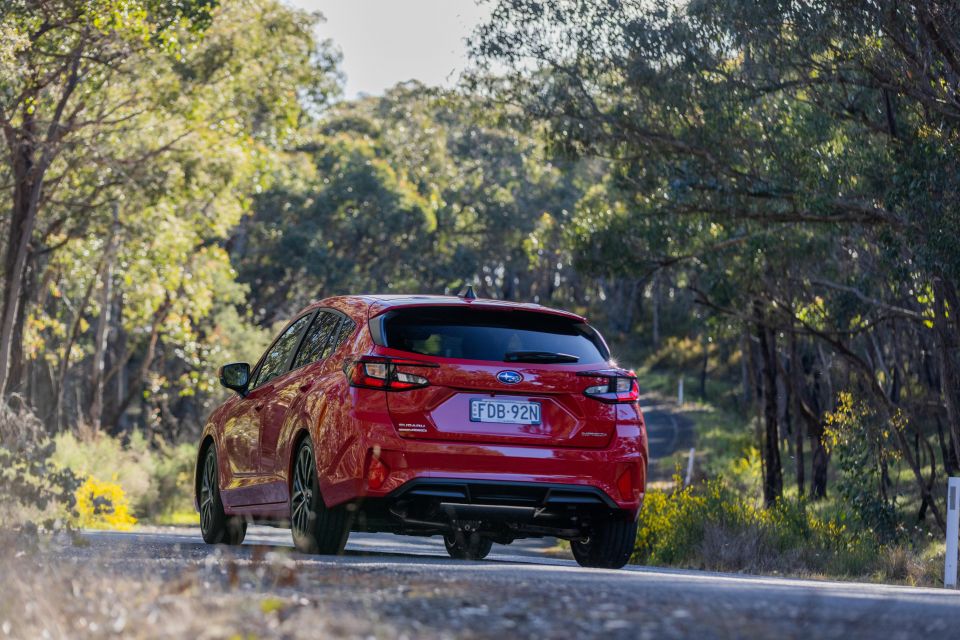
Of note is the fact Subaru has retained a double wishbone independent rear suspension design in an era where numerous manufacturers have begun to switch to cheaper and less sophisticated torsion beam rear setups in their smaller cars, which no doubt adds to the Impreza’s impressive road holding and well-sorted ride.
At higher speeds the Impreza doesn’t feel out of its depth, though the boxer engine will flare up going up hills or if the adaptive cruise control suddenly accelerates to follow a leading vehicle.
Ride compliance is also pretty good for the class, despite the 18-inch alloys on our 2.0R test car that are also standard on the 2.0S. The Impreza is tuned on the softer side but doesn’t feel wallowy or clumsy, and did a great job ironing out the lumps and bumps of Melbourne’s city streets during a week of commuting.
Given so many of these will spend the majority of their life in the city, it puzzles me as to why Subaru Australia didn’t take Japan’s lead and make the e-Boxer Hybrid version the standard engine choice or an option at minimum.
It’s basically the same 2.0-litre engine with an electric motor and lithium battery, meaning more time with the engine off in traffic and a small boost in performance under load – alas, it’s still unconfirmed for our market.

Subaru’s EyeSight safety suite features across the range too, meaning all Imprezas feature the full gamut of assists from the base level, with the mid-spec 2.0R adding convenience features like surround cameras and high-beam assist.
As we’ve found in other new Subarus, the adaptive cruise control and lane centring functions are good semi-autonomous helpers for longer freeway stints, though the former can be a little conservative and brake early even if a vehicle enters the lane well ahead of you.
Blind-spot monitoring and rear cross-traffic alert no doubt add a safety net when negotiating tight gaps in peak-hour traffic or reversing out of blind parking spots, and you can also use the intelligent speed limiter to quickly adjust the set speed on the cruise control to avoid fines in heavily-policed Australia.
Overall the Impreza impresses with solid all-round abilities, though its ageing drivetrain tech and merely adequate outputs mean it competes fine with a non-hybrid Corolla or a Mazda 3 G20, but cannot properly challenge the likes of the turbocharged Hyundai i30 N Line or Volkswagen Golf for performance and refinement.




Where expert car reviews meet expert car buying – CarExpert gives you trusted advice, personalised service and real savings on your next new car.
Impreza AWD 2.0L highlights:
Exterior
Interior
Entertainment, Technology and Safety
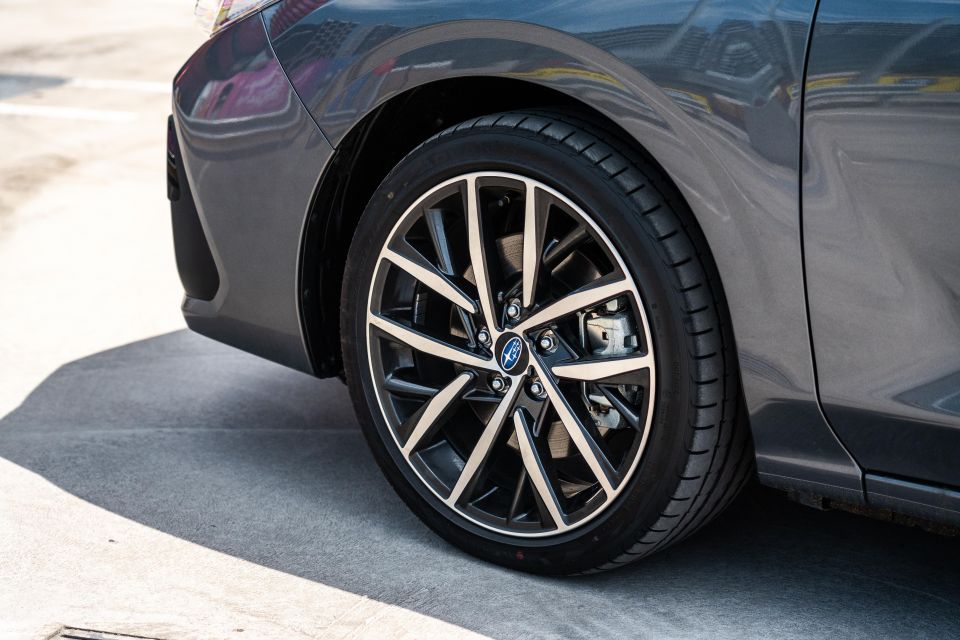

Impreza AWD 2.0R adds:
Exterior
Interior
Entertainment, Technology and Safety

Impreza AWD 2.0S adds:
Exterior
Interior
Entertainment, Technology and Safety

Standard: $NCO
The new-generation Subaru Impreza hasn’t been tested by ANCAP or Euro NCAP yet, and is currently unrated.

Standard safety equipment includes:
Impreza AWD 2.0R adds:
Subaru backs its new vehicle range with a five-year, unlimited-kilometre warranty.

It also offers five years or 75,000 kilometres of capped-price servicing, with intervals of 12 months or 15,000km. The first five services are capped at $346.25, $473.47, $420.60, $771.74 and $361.13, respectively.
That’s a little on the higher side compared to the likes of the Toyota Corolla and Honda Civic, but gone are the days where Subarus cost a fortune to maintain.
My indicated fuel economy of 8.3L/100km is decent given the city-heavy driving I did, and to be fair earlier on in the week with more freeway and off-peak urban driving it was sitting in the high-6.0s and low-7.0s.
However, given the Crosstrek e-Boxer Hybrid managed a 2.0L/100km gain on the equivalent petrol in our own testing in high-traffic daily driving, I can only assume the Impreza with the same drivetrain would achieve similar results. As the Impreza is more town-focused than the Crosstrek, it’s disappointing the electrified version isn’t available here.
The new Impreza probably won’t be a huge seller, but I’m glad it still exists in today’s market.

Subaru has dared to soldier on with a segment that continues to dwindle, while also offering a completely unique drivetrain layout that just doesn’t exist in the mainstream small passenger segment in Australia.
The developments to the technology, handling and refinement are all notable and welcome, and brings the nameplate back into contention with some of the segment’s biggest players, particularly the ones from Japan and Korea. It’s also relatively solid value at the lower end of the range.
With that said, the atmo boxer engine is a little old-hat sans any form of electrification, and the whole package is all a tad uninspiring. The cookie-cutter Subaru design also means it doesn’t really have any distinct personality.
I think the base 2.0L represents great value for money at $31,490 plus on-roads, and the 2.0R on test adds a number of desirable features to justify the $3500 premium. I’d probably pass on the expensive 2.0S.
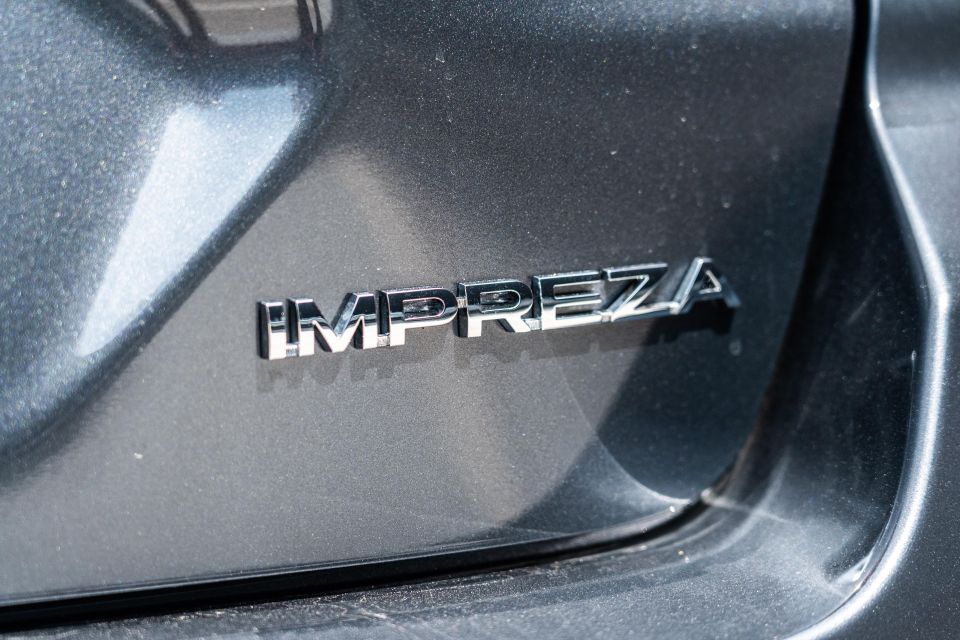
Click the images for the full gallery
BUY: Subaru Impreza MORE: Everything Subaru Impreza
Where expert car reviews meet expert car buying – CarExpert gives you trusted advice, personalised service and real savings on your next new car.
James is an automotive journalist based in Melbourne, Australia. Before joining CarExpert.com.au in 2020, James has worked at leading auto media outlets including Carsales and CarAdvice, as well as at Pulse agency for Ford Australia's communications team. In 2019 James made Mumbrella's 'Top 20 most prolific web authors in Australia' list after publishing 1,360 articles between March 1, 2018 and February 28, 2019 for CarAdvice. James is also an Ambassador for Drive Against Depression – an Australian charity whose mission is to support mental wellness through the freedom of driving and a shared love of cars.


Anthony Crawford
6 Days Ago


Matt Campbell
5 Days Ago


James Wong
4 Days Ago


Max Davies
2 Days Ago


Josh Nevett
1 Day Ago


Josh Nevett
21 Hours Ago